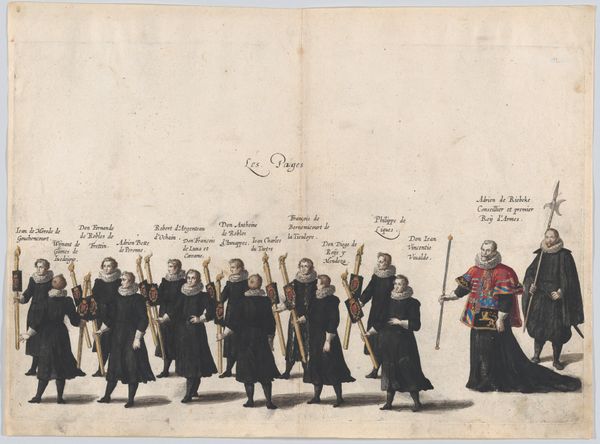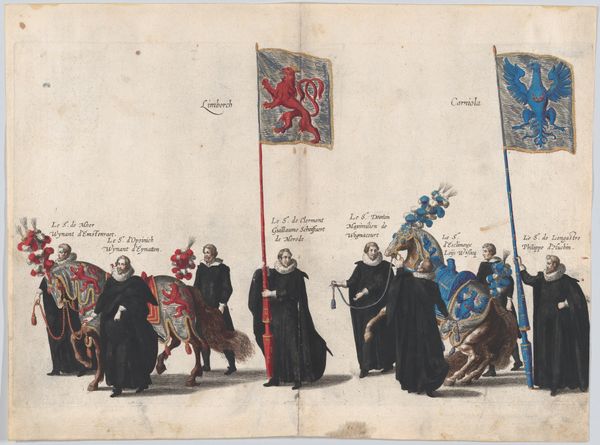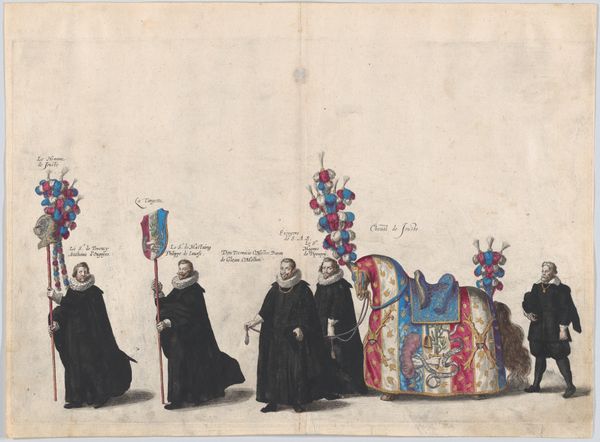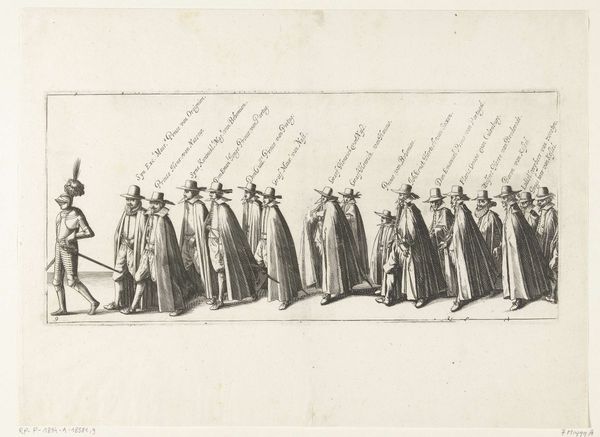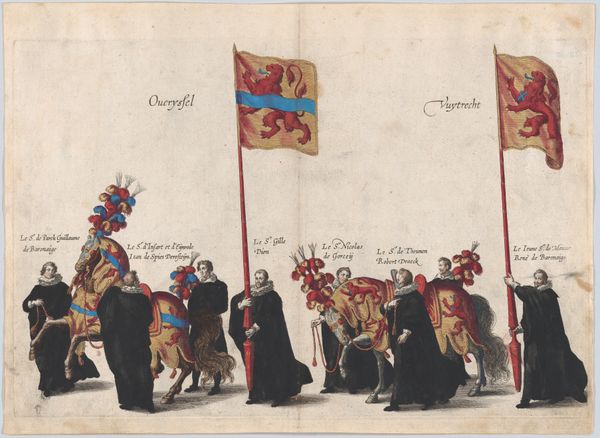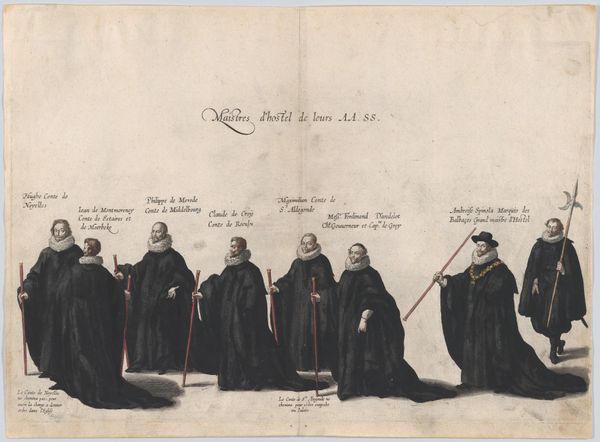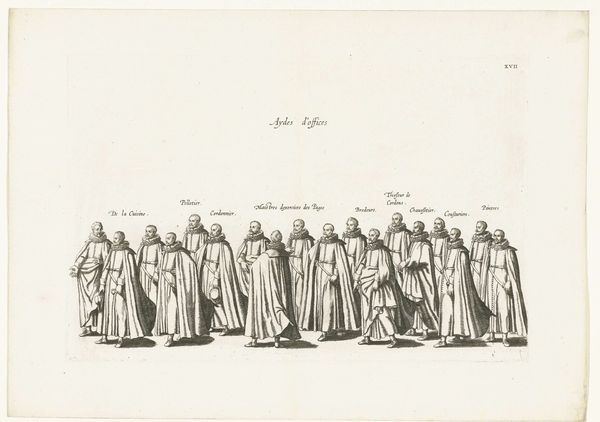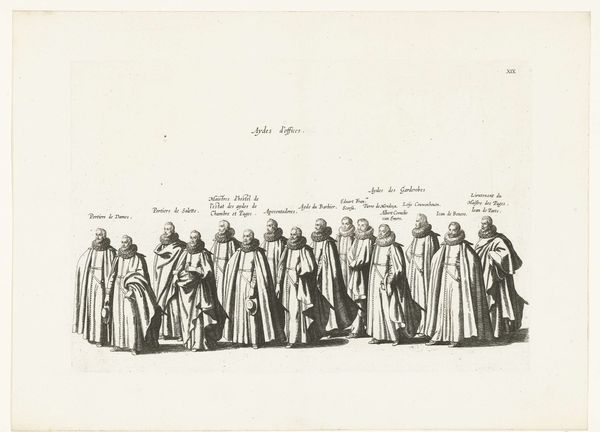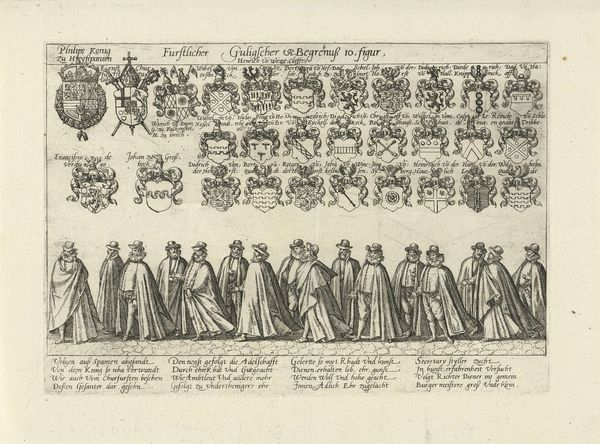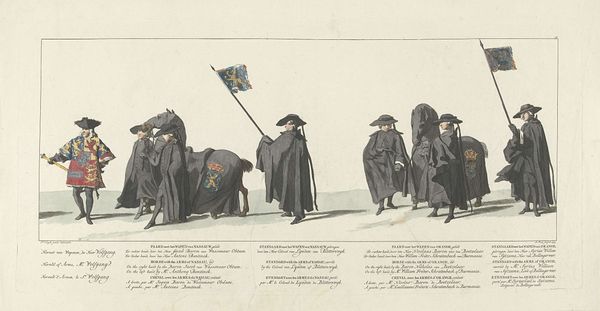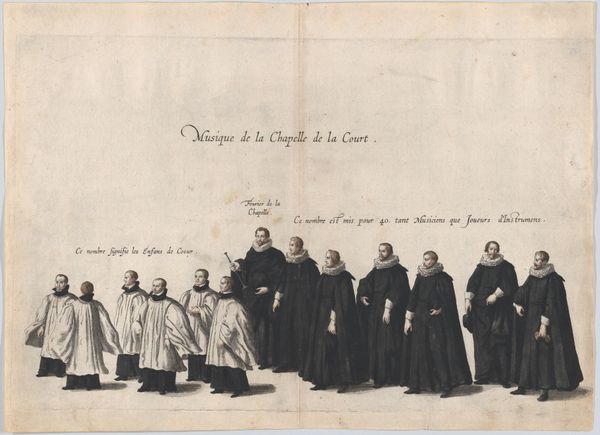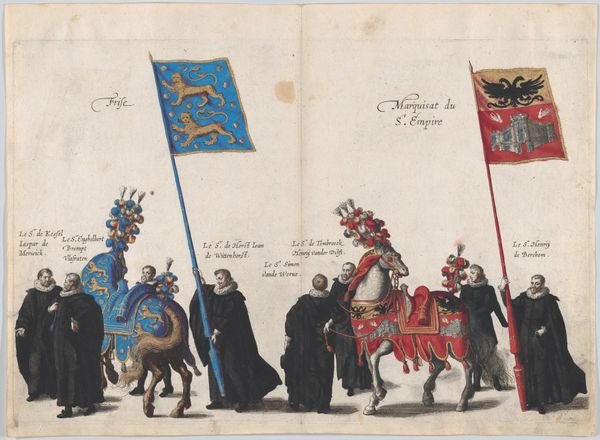
Plate 28: Drummers and trumpet players marching in the funeral procession of Archduke Albert of Austria; from 'Pompa Funebris ... Alberti Pii' 1623
0:00
0:00
drawing, print, engraving
#
portrait
#
drawing
#
baroque
# print
#
group-portraits
#
history-painting
#
engraving
Dimensions: Sheet: 11 1/4 × 15 5/16 in. (28.5 × 38.9 cm) Plate: 9 5/8 × 14 13/16 in. (24.5 × 37.6 cm)
Copyright: Public Domain
Editor: This is "Plate 28: Drummers and trumpet players marching in the funeral procession of Archduke Albert of Austria; from 'Pompa Funebris ... Alberti Pii'," an engraving by Cornelis Galle I, dating to 1623. The musicians, uniformly dressed in black, have an oddly somber and imposing presence. What can you tell me about its broader historical context? Curator: What strikes me is not only the somber tone, as you mention, but how meticulously it depicts power structures during a period of significant social and political upheaval. Galle created this engraving within the historical backdrop of the Thirty Years' War, a conflict deeply rooted in religious and political tensions. Considering this lens, the funeral procession transcends simple mourning; instead it is a spectacle that reinforces Habsburg authority, particularly within a contested religious landscape. Editor: I see what you mean. The uniformity and the focus on the instruments of sound – drums and trumpets – suggest a very deliberate performance. But where do you see evidence of those "power structures?" Curator: Look at the hierarchical arrangement; the figures, though similar, subtly indicate status and role within the procession. Furthermore, the "Pompa Funebris" was created not merely to record the event, but as propaganda. Prints like this one would have circulated widely, both legitimizing Habsburg rule and imposing a unified vision of mourning across a diverse populace. Consider how images function in solidifying collective identities and narratives, especially during times of conflict. Who is "allowed" to publicly grieve, and whose story is being told? Editor: So, the engraving isn't just documenting a funeral, it's actively shaping a political narrative about the Habsburgs? It’s interesting to think about how images of power and authority, such as in state funerals, are carefully constructed. I hadn't considered the propaganda element so explicitly. Curator: Exactly. And by understanding its function within 17th century social and political debates, the print also reveals enduring strategies used to define identity and solidify narratives. This way we understand that Art History isn't a dead discipline of the past, but instead resonates with issues that surround us today. Editor: Thanks, it all makes so much more sense now. It really opens up the conversation to ideas about social dynamics beyond its Baroque trappings.
Comments
No comments
Be the first to comment and join the conversation on the ultimate creative platform.
